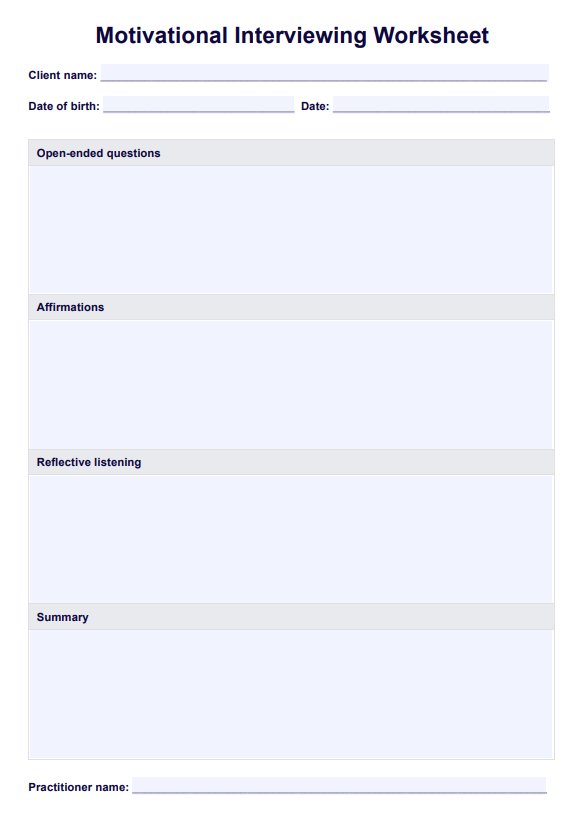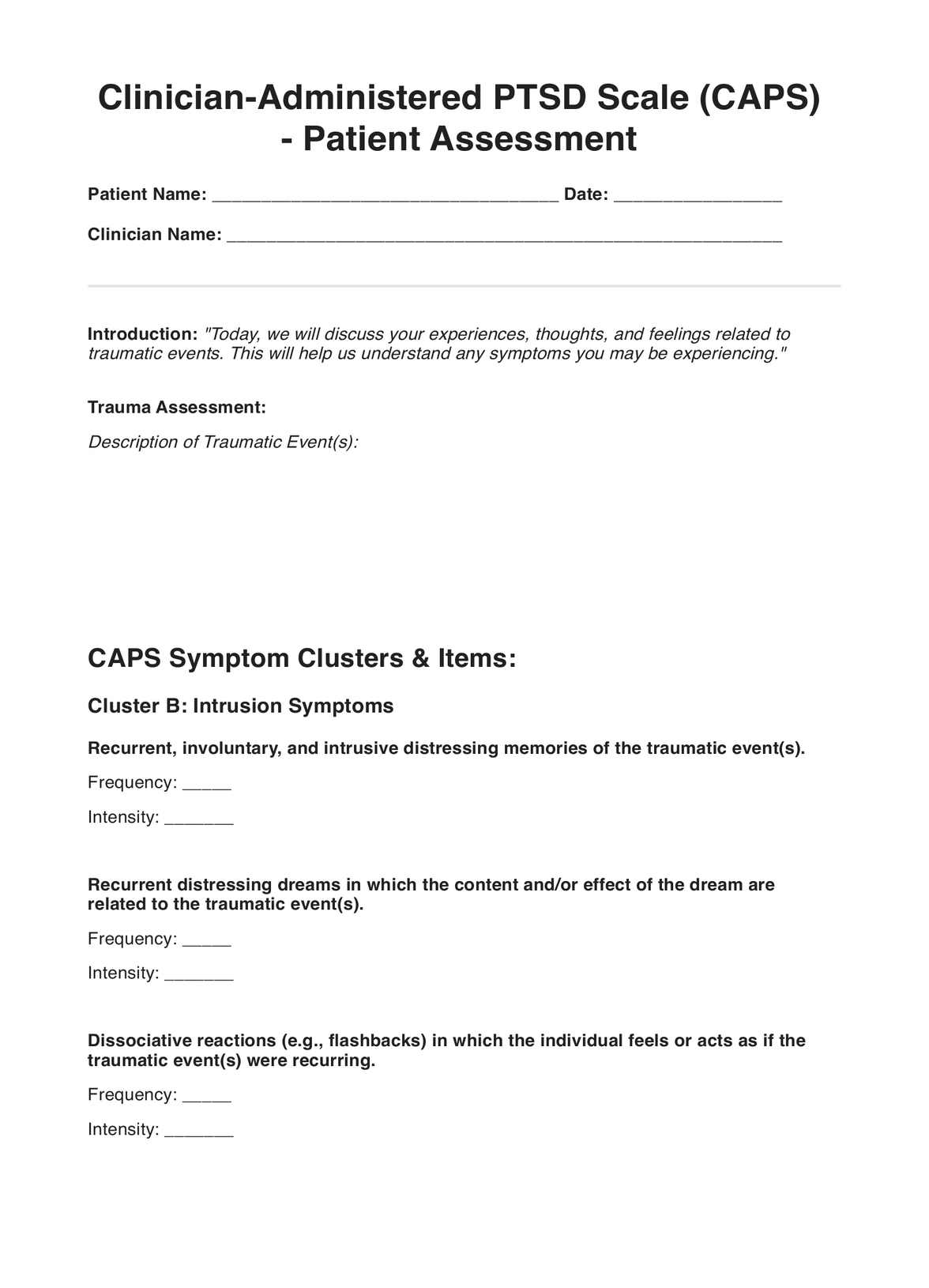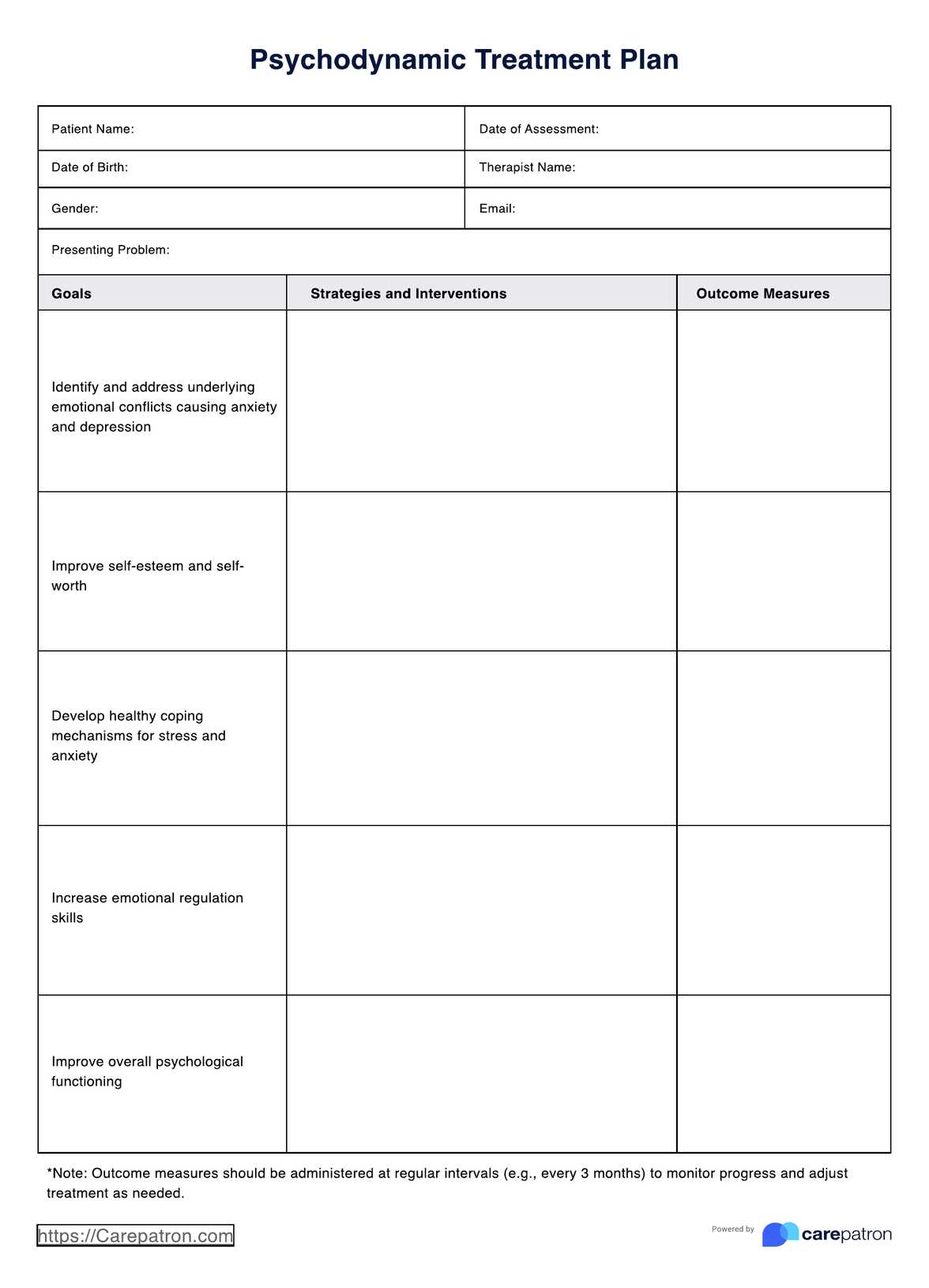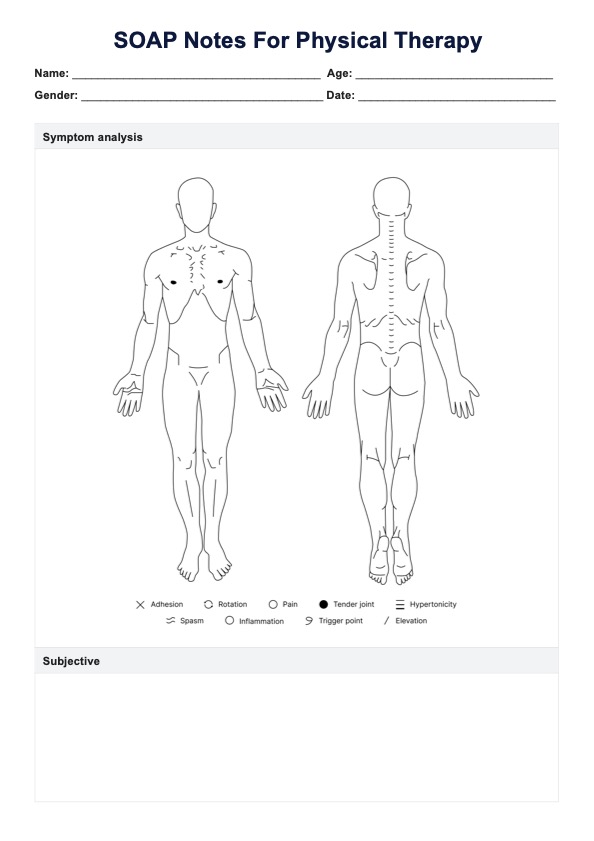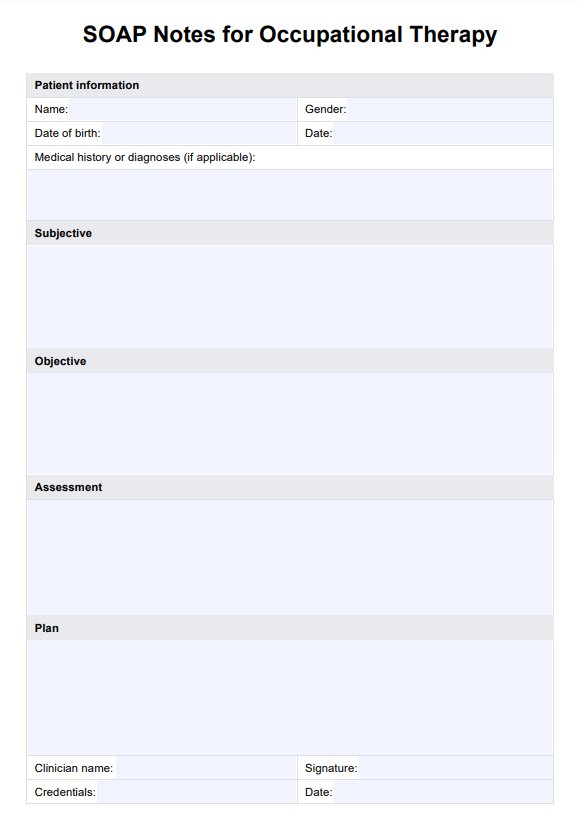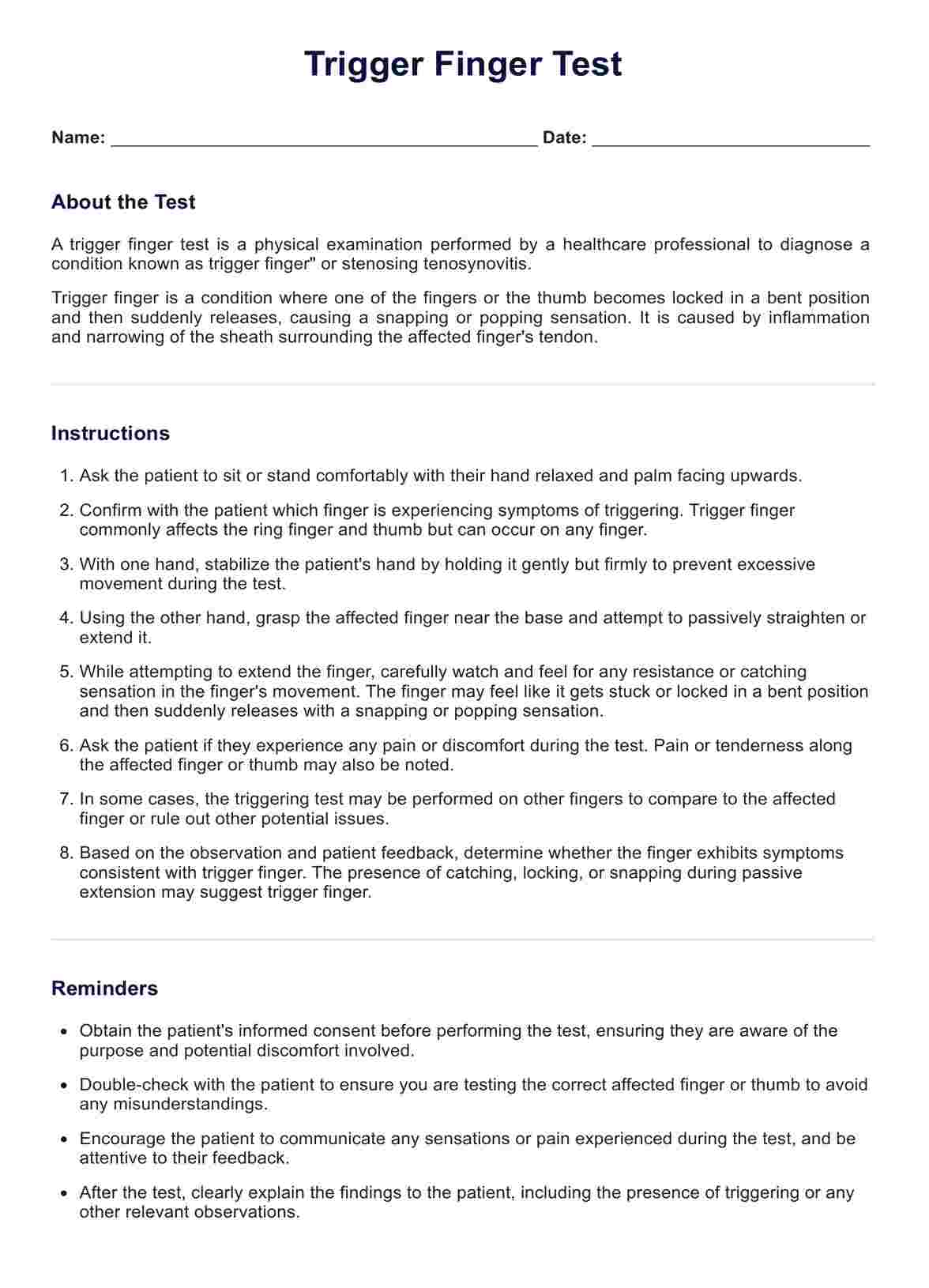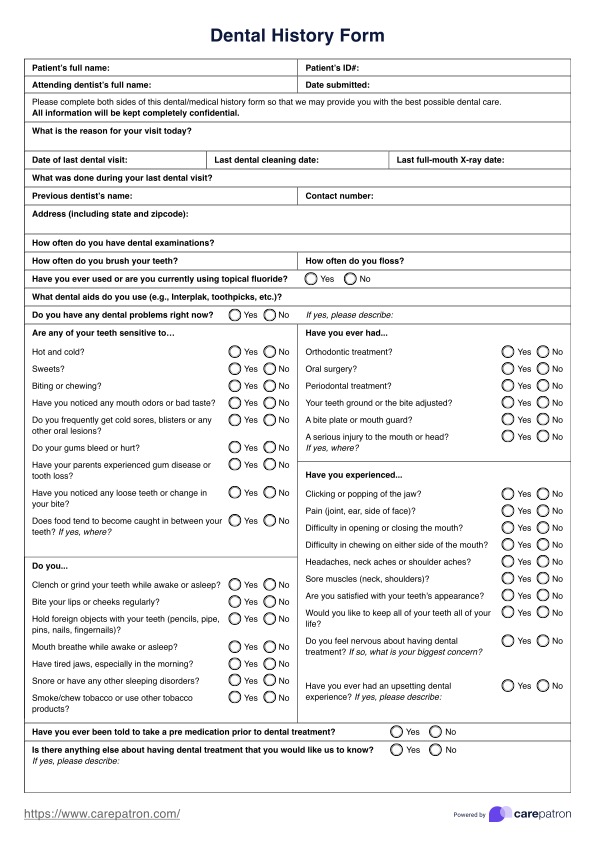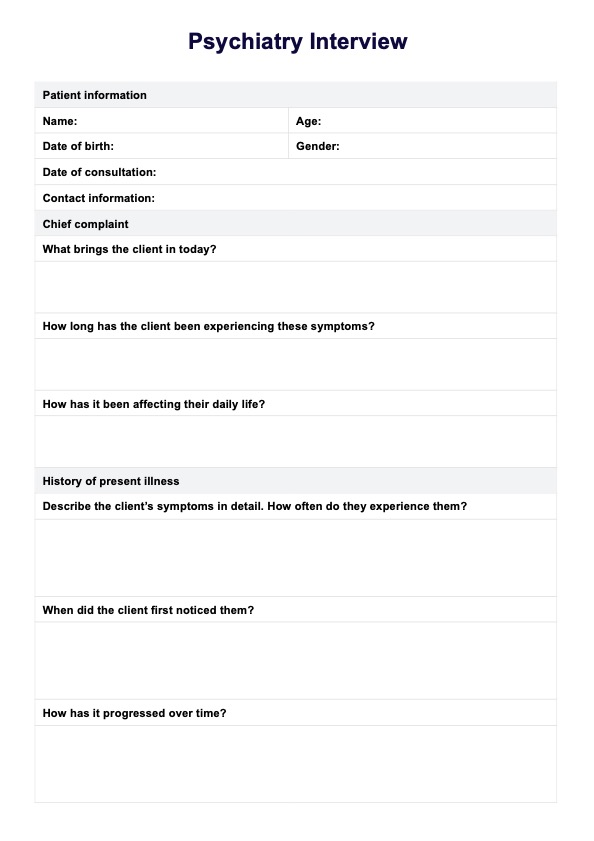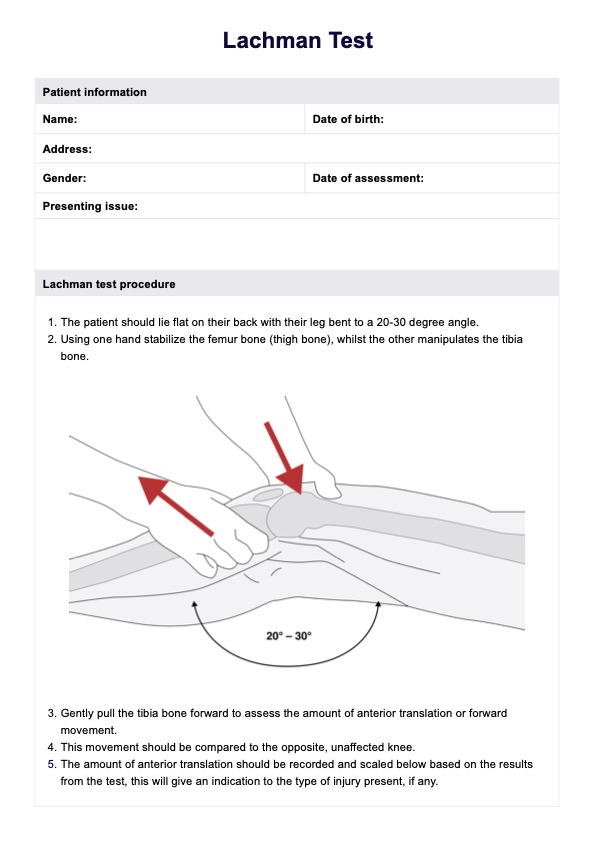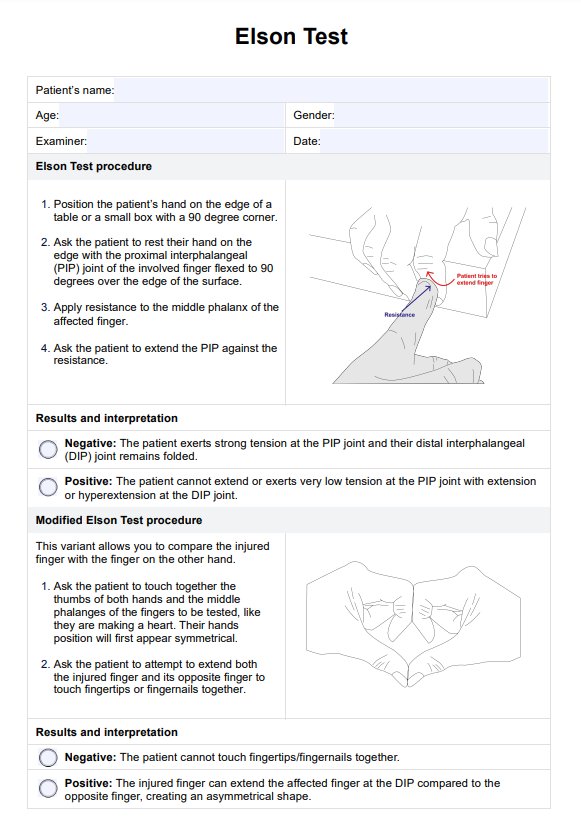GMFCS Scale
Learn to use the Gross Motor Function Classification System (GMFCS) scale and its five levels of functioning for young patients with cerebral palsy.


What is a Gross Motor Function Classification System (GMFCS)?
The Gross Motor Function Classification System (GMFCS) is a five-level classification system used to evaluate and categorize the functional abilities of children and youth with cerebral palsy (CP). Developed by Palisano and colleagues (1997), this system focuses on gross motor skills, such as sitting, walking, and the need for assistive devices, while also considering environmental and personal factors that influence motor function. Each level represents a distinct set of capabilities, ranging from independent movement (Level I) to severe limitations requiring extensive support (Level V).
This scale has also been expanded and revised to account for the development of motor skills as children grow (Palisano et al, 2007). The Gross Motor Function Classification System Expanded and Revised (GMFCS—E&R) has age bands for under 2 years, 2-4 years, 4-6 years, 6-12 years, and 12-18 years, helping clinicians assess changes in motor function over time. The system emphasizes what children can do in their natural settings rather than what they may achieve with effort or therapy.
In addition to evaluating gross motor performance, the GMFCS complements other classification tools like the Communication Function Classification System (CFCS), which evaluates communication abilities, and the Manual Ability Classification System (MACS), which assesses hand function. Together, these tools offer a comprehensive understanding of a child's capabilities and needs, ensuring tailored interventions and improved quality of life.
The GMFCS Scale PDF is designed to be used by physical therapists, occupational therapists, caregivers, physicians, and speech-language pathologists. The scale may also be used by parents, teachers, and other professionals who work with children with cerebral palsy.
GMFCS Scale Template
GMFCS Scale Example
How to use our GMFCS Scale template
Our GMFCS Scale template provides healthcare professionals with an easy-to-use tool to classify gross motor function in children with cerebral palsy. It includes the complete GMFCS scale's expanded and revised version, fields for recording key patient data and space for additional notes. Follow these steps to effectively use the template in your clinical practice:
Step 1: Access the template
To get started, click the “Use template” button to open the template directly in the Carepatron web app. This allows you to customize, fill, share, or print the template online. Alternatively, use the “Download” button to save a non-customizable, printable PDF to your device.
Step 2: Collect patient information
Record essential details such as the patient’s name, age, date of birth, and guardian information in the designated fields. This ensures accurate identification and documentation.
Step 3: Assess the patient
Evaluate the child’s motor function by observing their movement in real-life scenarios and comparing their abilities to the descriptions in the GMFCS levels. Focus on activities like sitting, standing, walking, or using assistive devices, and note how they navigate various environmental and personal factors.
Step 4: Determine the GMFCS level
Based on your observations, assign the appropriate GMFCS level (I through V) that best aligns with the patient’s current gross motor abilities and limitations. Use the template to record the level and any additional findings.
Step 5: Discuss results with guardians or caregivers
Explain the GMFCS level and its implications to the patient’s family or care team. Highlight areas of strength, potential challenges, and how the classification can guide treatment plans, therapy, or equipment needs.
GMFCS levels
The Gross Motor Function Classification System divides children with cerebral palsy into five levels, providing a detailed view of their gross motor performance. These levels describe a child's ability to perform daily activities, their use of assistive technology, and their independence in community settings. Below are general descriptions of the five GMFCS levels for all ages:
- Level I: Children at this level have self-mobility and can walk independently both indoors and outdoors. They can climb stairs without assistance and perform more advanced motor skills such as running and jumping, though their speed, balance, and coordination are often reduced compared to peers.
- Level II: These children can walk in most settings but may need a hand-held mobility device to navigate uneven surfaces or crowded areas. They can climb stairs with a handrail but show only minimal ability to run or jump due to limitations in gross motor control.
- Level III: Children at this level typically walk using assistive technology and mobility aids such as walkers or crutches on level surfaces. They may rely on a manual wheelchair for longer distances or challenging environments. While they can climb stairs with a handrail and support, additional assistance is often required.
- Level IV: Mobility for children in this category is significantly limited, even with mobility devices. They rely predominantly on wheeled mobility, such as powered or manual wheelchairs, and require help for standing transfers and other physical activities.
- Level V: The most severe level, where children experience profound physical impairments that limit voluntary control of arm and leg movements. They cannot maintain head or neck control against gravity and rely entirely on caregivers and adaptive equipment for all mobility and positioning needs.
The GMFCS levels provide a comprehensive framework to assess a child's functional abilities and physical mobility. Importantly, these classifications focus solely on gross motor performance and do not reflect the child’s cognitive or intellectual abilities.
When to use this GMFCS assessment?
The GMFCS assessment is a valuable tool for healthcare professionals working with children diagnosed with cerebral palsy or related motor impairments. It can be used to assess a child’s mobility levels, identify their need for assistive technology, and develop tailored intervention plans. Below are some scenarios when this assessment is most effective:
- To assess daily assistance needs: The GMFCS helps evaluate how much support a child requires for daily activities, from minimal physical assistance to full dependence. This insight is vital for creating personalized care strategies.
- For designing therapy interventions: By understanding a child’s functional level, healthcare providers can design targeted physical or occupational therapy programs. These plans can address current needs and adapt as the child grows and their motor skills develop.
- To recommend mobility solutions: The GMFCS informs decisions about mobility devices such as wheelchairs, walkers, or other aids. These recommendations ensure children have the best tools to maximize independence.
- To monitor progress and treatment outcomes: Tracking changes in GMFCS levels over time allows healthcare professionals to evaluate the effectiveness of interventions. Improvements or declines can inform adjustments in care plans or therapy goals.
This assessment is particularly useful during initial evaluations, periodic progress reviews, or when significant changes in the child’s condition are observed. By integrating the GMFCS into clinical practice, professionals can ensure a comprehensive and evidence-based approach to care. You can also try our occupational therapy treatment plan template and therapy treatment plan template to improve patient outcomes.
Benefits of free GMFCS Scale template
The free GMFCS Scale template provides healthcare professionals with a simple and effective way to assess and document the motor function of children with cerebral palsy. It is designed to enhance clinical practice and patient understanding. Below are its key benefits:
- Easy to administer: The scale is straightforward and includes clear descriptions of each level, enabling professionals to quickly assess motor function and identify needs.
- Digital and accessible: The template is fully digital, making it accessible for both in-person and remote assessments. Healthcare professionals can download, customize, and use it seamlessly.
- Supports collaborative care: By helping patients and guardians understand a child's motor function, the GMFCS Scale facilitates discussions and fosters collaboration between care teams and families.
This tool simplifies documentation, improves communication, and helps ensure evidence-based care for children with cerebral palsy.
References
Palisano, R., Rosenbaum, P., Walter, S., Russell, D., Wood, E., & Galuppi, B. (1997). Development and reliability of a system to classify gross motor function in children with cerebral palsy. Developmental Medicine and Child Neurology, 39(4), 214–223. https://doi.org/10.1111/j.1469-8749.1997.tb07414.x
Palisano, R., Rosenbaum, P., Bartlett, D., & Livingston, M. (2007). Gross Motor Function Classification System - Expanded & Revised (GMFCS - E&R). CanChild Centre for Childhood Disability Research, McMaster University.
Commonly asked questions
The GMFCS, or Gross Motor Function Classification System, is a five-level classification system that evaluates the functional abilities of children and adolescents with cerebral palsy. It categorizes motor function based on self-initiated movement and the need for assistive devices in different settings.
There are five levels according to the GMFCS scale: Level I: Independent walking and running with slight limitations in speed and coordination; Level II: Walks independently but has difficulty with inclines, uneven surfaces, or crowds; Level III: Requires assistive mobility devices and may need help with longer distances; Level IV: Relies mostly on wheeled mobility and may need help with transfers; and Level V: Severe motor impairments require total assistance for mobility and daily activities.
The gross motor function measure (GMFM) score is a quantitative assessment tool used to evaluate changes in gross motor function over time in individuals with cerebral palsy. It measures the ability to perform specific motor tasks, providing insights into progress or the effectiveness of interventions.


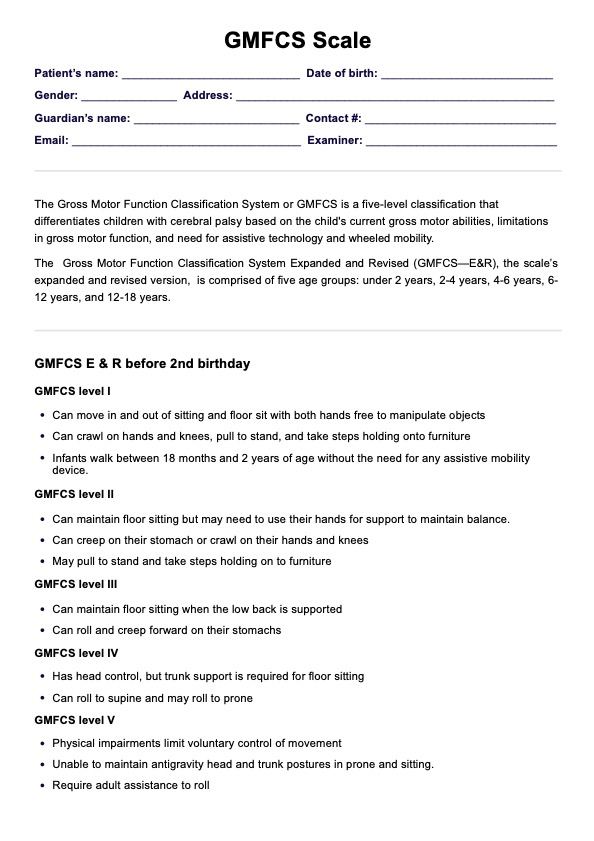
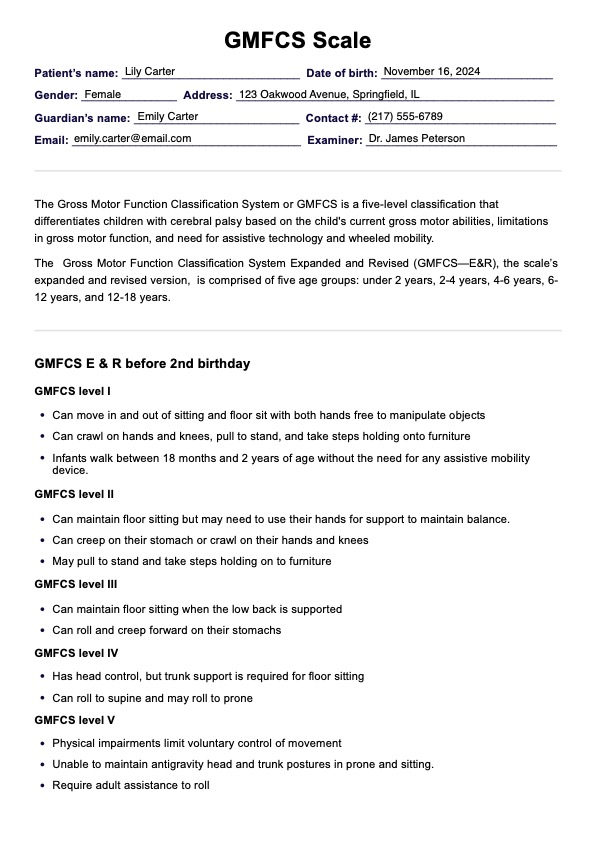

















-template.jpg)


















































































